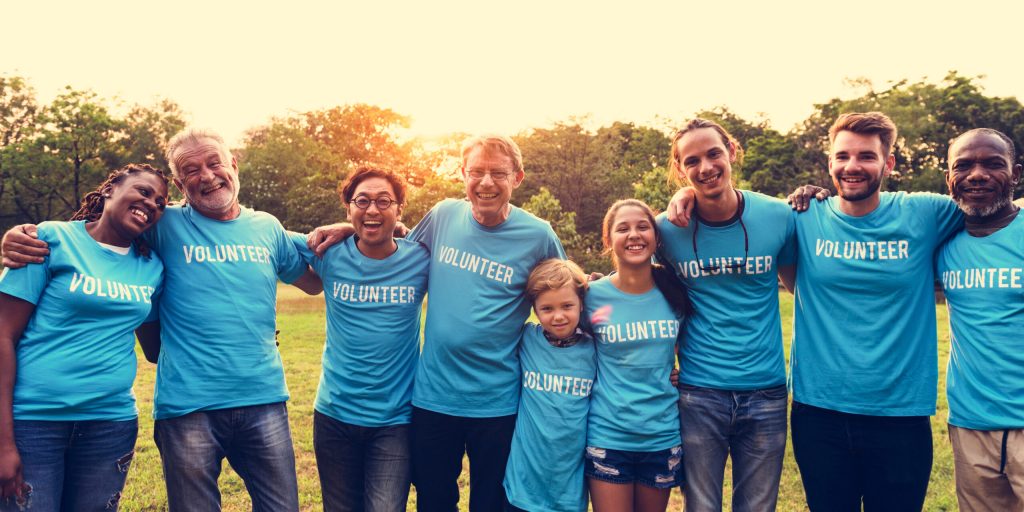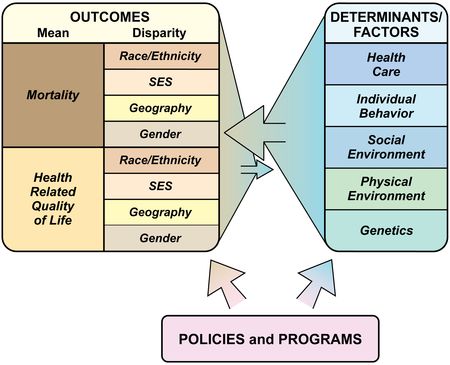Zana's Health Corner

By Elizana-Marie Joseph
The Value of Volunteers:
How Volunteering Improves Health Outcomes

Filling Gaps in Healthcare Systems
It is no secret that there are gaps in our healthcare systems. Whether we are talking about systems that exist at the local, state, national or international levels there are plenty of health disparities related to gaps in health access, quality and affordability. Eliminating these disparities requires public health professionals to focus on equity for all people across the lifespan.
Every day there are millions of people who fall through the cracks, unable to achieve optimum levels of health because of internal and external factors. In many ways, the COVID-19 pandemic has revealed and exacerbated these issues. There are a variety of global health challenges that have existed before, during and after the pandemic. But there is also comfort in knowing that in nearly every time of crisis, big or small, there are compassionate people willing to give of themselves to help make the world a little bit better for others.
Volunteers and community service organizations help improve health outcomes by meeting needs related to the health and well-being of individual people and collective populations.
Volunteers and community service organizations help improve health outcomes by meeting needs related to the health and well-being of individual people and collective populations.
Understanding and Optimizing Health Outcomes
Health outcomes measure changes in the health status of an individual or group as a result of an intervention or investment of specific resources. Positive health outcomes are often related to the prevention of injury or disease, and the improvement of an individual or group’s quality of life. Adverse health outcomes are factors that may negatively impact an individual or group’s health and lead to premature death.
The World Health Organization’s definition of health recognizes the significance of social determinants and their influence on the health of populations. As a result, there are a variety of methods used to measure and analyze physical, mental and social health outcomes and disparities that exist between populations. Having these tools available, helps public health professionals make more informed decisions about where to allocate resources and how to design, implement, monitor, and evaluate effective interventions that increase health equity.
Volunteers have similar tools and methods available to assess the needs of their communities and to measure the impact of their volunteer efforts.
Responding to Public Health Challenges and the Need for Help
There are a lot of bad, scary, and unfair things going on in the world. Sometimes watching the news makes my blood boil and my stomach churn. It is difficult to rest knowing how many people in my communities, and throughout the world, are suffering. There is an imperative need to combat public health challenges like, misinformation, climate change, gun violence, food insecurity, emergency preparedness, and infectious diseases.
For years, there have been concerns about global health workers and burnout. These concerns have only grown since the onset of the pandemic. In the United States there is a growing shortage of primary care providers. This depleting resource is especially troubling for those who live in rural areas and have even less access to necessary resources. According to the U.S. Census Bureau, 1 in 5 Americans live in a rural area and rely on their local health care facility for support. Yet, this past year rural hospital closures hit a record high. Unfortunately, this trend is likely to continue – leaving some of the nation’s poorest and most vulnerable populations behind.
These numbers hit home for me because they are so much more than statistics. They are the stories and experiences of my patients, seeking resources in a rural area where there is not a single hospital in the entire county despite having a population of 50,000 people. It is hard to bear witness to such disparities.
In such moments, I am reminded to “look for the helpers” (Mr. Rogers). “For there is always light, if only we’re brave enough to see it, if only we’re brave enough to be it” (Amanda Gorman).
“For there is always light, if only we’re brave enough to see it, if only we’re brave enough to be it” .
~ Amanda Gorman ~
Volunteers are Positively Priceless
There are approximately 970 million volunteers worldwide. Their collective efforts have a monetary value of $1.348 trillion USD – which is about 2.4% of the entire global economy. About 30.3% of American adults volunteer and their contributions have an estimated worth of approximately $187.7 billion. In truth the time, talent and energy volunteers give is priceless. Volunteers help build resilient communities while delivering critical aid and support to those in need.
Volunteers help build resilient communities while delivering critical aid and support to those in need.
Local and Global Health Benefits Associated with Volunteers
In the wake of disaster, trauma, and injustice there are people with massive hearts ready, willing and able to help. After the 2010 Haiti earthquake volunteers and foreign aid workers did their best to fill the gaps. Not just those left behind by the fault lines, but the systemic gaps that existed long before this individual humanitarian crisis. After the tragic collapse of the Surfside Condo Complex in Florida, teams of highly trained and experienced personnel, including international volunteers, are leading the search and rescue efforts. Similarly, skilled volunteer teams are deployed when hikers get lost or injured in National Parks.
In fact, most firefighters and emergency medical service providers are volunteers. Without these volunteers to administer care on a regular and ongoing basis, the health and safety of individuals in their jurisdictions would be very different. This is especially true for communities who already have limited health access.
When it comes to health issues like homelessness, STI screening, blood donations, and substance use, volunteers are there making a difference in the lives of others. Hunger and malnutrition are also significant barriers to health and they are challenges volunteers tackle head-on. Food banks, mobile pantries, and community gardens help to bridge the divide by getting resources to those in need. To combat hunger during the pandemic, teachers and community members volunteered to pack lunches for school aged children and their families. Young people volunteered to pick up groceries for homebound, elderly and other vulnerable individuals to help minimize their exposure to COVID-19 and increase access to necessary supplies.
During a national shortage of personal protective equipment, people began sewing masks and scrub caps to help local healthcare workers. Innovators 3D printed adapters for ventilators, made face shields, ear protectors, and tried to find ways to sanitize masks. People volunteered to work as contact tracers and volunteered to help track data. Hotels opened their doors to healthcare workers and homeless populations to safeguard people from possible exposures and increase social-distancing measures. Volunteering to tutor someone or teach them a new skill are also important ways to promote health, because an individual’s level of education and social-economic status can be factors influencing their overall health.
Individual Health Benefits Associated with Volunteering
There is an infinite amount of good that volunteers can provide to others. In addition to the positive impacts volunteers and community service members have on their communities, there are also personal health benefits associated with volunteering. Studies have consistently found strong evidence supporting links between volunteering and a multitude of physical and mental health benefits. Those who volunteer often experience increased happiness, less chronic pain, reduced risk of heart disease, better physical health and increased life-expectancy. In addition, volunteering can help counteract the effects of stress, anger, anxiety and depression. By increasing social interaction, volunteering also prevents feelings of isolation. Volunteering has also been shown to improve brain function and reduce cognitive decline. It encourages people to have a stronger sense of life purpose, greater self-confidence, and can help advance career opportunities.
Clearly, contributing to the health of others, contributes to the health of self. So I encourage you to get involved. Be a volunteer. Help fill the gaps in your communities – because local health is global health and you can make a difference.
Be a Volunteer. Improve the Health of Your Community.
Find Volunteer Work and Opportunities
Are you interested in finding ways to volunteer and make a positive impact in your community?
Check out volunteermatch.org and idealist.org to find a cause or project in your area that fits your interests.
You can even volunteer with us at HPHR!
- If you are interested in serving as a Reviewer for the Harvard Public Health Review click here to complete the interest form.
- If you are interested in becoming an Editor, a Fellow, or a member of our Digital Content and Social Media Teams email editorial@
harvardpublichealthreview.org to learn more.
Like what you read?
More from Elizana-Marie Joseph here.


